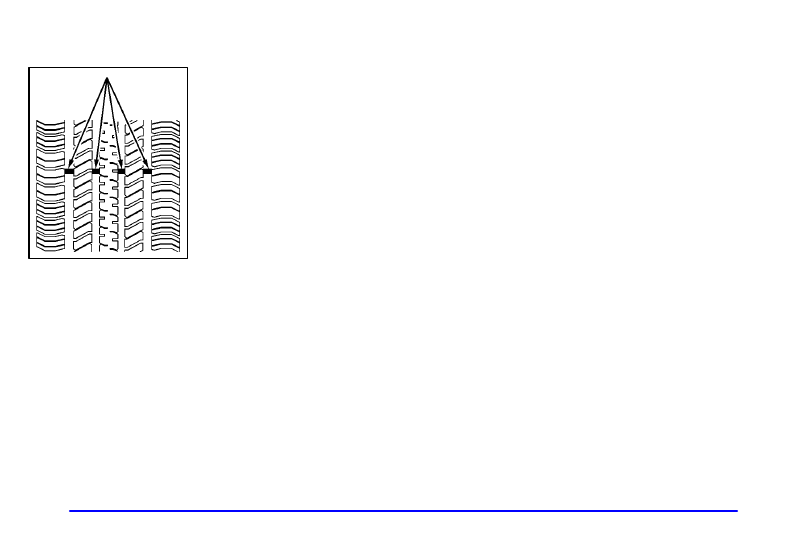Pontiac Grand Am (2002 year). Manual - part 18

6-42
When It’s Time for New Tires
One way to tell when it’s
time for new tires is to
check the treadwear
indicators, which will
appear when your tires have
only 1/16 inch (1.6 mm) or
less of tread remaining.
You need a new tire if any of the following statements
are true:
D You can see the indicators at three or more places
around the tire.
D You can see cord or fabric showing through the
tire’s rubber.
D The tread or sidewall is cracked, cut or snagged deep
enough to show cord or fabric.
D The tire has a bump, bulge or split.
D The tire has a puncture, cut or other damage that
can’t be repaired well because of the size or location
of the damage.